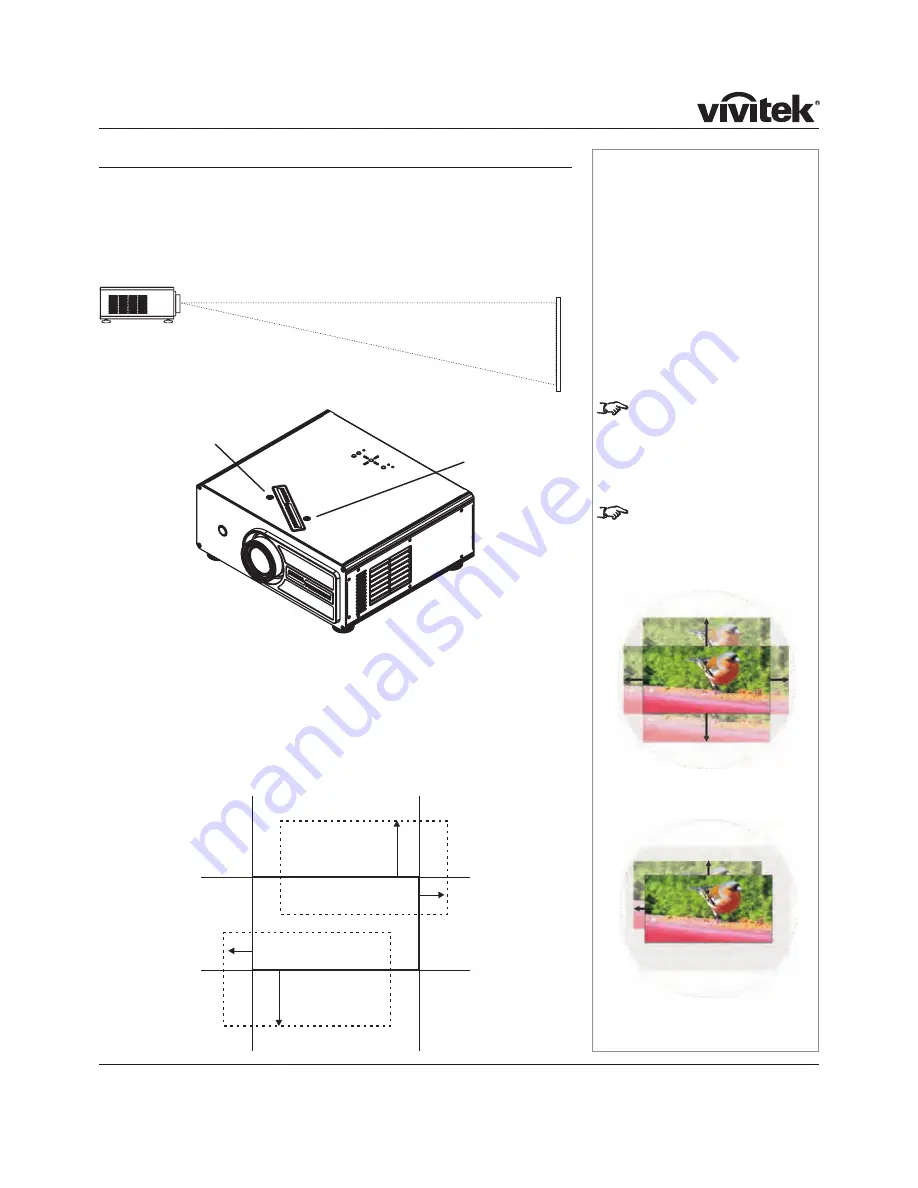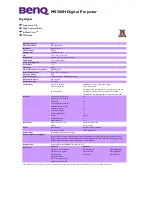
Page 2.10
Notes
!"#$%&#'()*&+$)(#,-#.$$&/#0,$%#$%&#
.1&/#234567#8&9-#$%&9#$%&(&#:(&#
9)#;&+%:9,+:8#+)9$()8-#")(#8&9-#
shift.
!"#$%&9-#,-#$)#<&#-%,"$&/#,9#
$0)#/,(&+$,)9-#+);<,9&/=#$%&#
;:1,;>;#(:9?&#,-#-);&0%:$#
8&--=#:-#+:9#<&#-&&9#<&8)0
.
">88#%)(,@)9$:8#)(#A&($,+:8#-%,"$
0,$%)>$#/,-$)($,)9
+);<,9&/#-%,"$
,-#(&/>+&/
Shifting the image
Ideally, the projector should be positioned perpendicular to the screen.
The normal position for the projector is at the centre of the screen. However, you
can set the projector above or below the centre, or to one side, and adjust the image
using the
Lens shift
controls on the top of the projector to maintain a geometrically
correct image.
The image can be shifted by up to:
± 0.6 of the height of a full screen image (known as 120% shift)
± 0.15 of the width of a full screen image (known as 30%)
!$#,-#'%B-,+:88B#')--,<8&#$)#-%,"$#$%&9-#">($%&(#$%:9#$%,-=#%)0&A&(#$%&(�,88#<&#-);&#
/,-$)($,)9#)"#$%&#,;:?&#<&B)9/#$%&#(:9?&-#-'&+,.&/#:<)A&3
!
!
C)(,@)9$:8#-%,"$#
:/*>-$;&9$
V
&($,+:8#-%,"$#
:/*>-$;&9$
(Rotate the
<:/?&D
+ 0.6 H
– 0.15 W
+ 0.15 W
















































